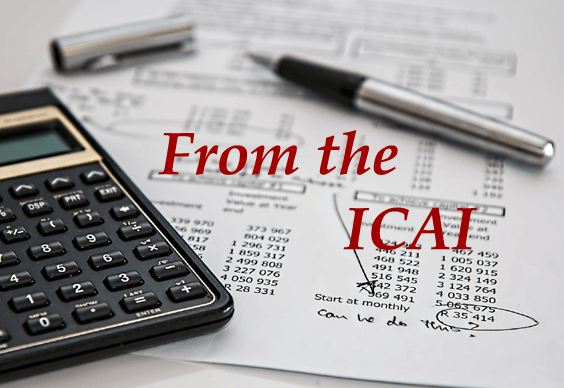CBDT releases ITR forms for FY 2022-23 (AY 2023-24)
Feb 14, 2023
The Central Board of Direct Taxes (CBDT) has notified the income tax return (ITR) forms for the current financial year, 2022-23 (AY 2023-24). The ITR forms were notified on February 10, 2023. There are no major changes in the ITR forms. However, the ITR forms have been notified almost two months earlier than usual. Usually, the government notifies the ITR forms at the end of the financial year or at the start of the new financial year. Do note that the last date for filing ITR for FY 2022-23 for individuals (whose accounts are not required to be audited) is July 31, 2023.
Dr Suresh Surana, Founder, RSM India says, "The Budget 2023 proposed several key amendments for the taxpayers. Apart from such amendments, the Finance Minister in her budget speech clarified her intention to simplify the Income Tax Return (ITR) filing process by rolling-out a next-generation Common ITR Form for the convenience of the tax payers, and her plans to strengthen the grievance redressal mechanism. CBDT vide a Press Release dated 1st November 2022 released a draft Common ITR Form for public consultation. As per the said release, CBDT proposes to introduce a common ITR by merging all the existing returns of income, except ITR-7 and continuing the current ITR-1 and ITR-4. CBDT had further mentioned that, once the common ITR Form is notified, the online utility will be released by the Income-tax Department. However, CBDT vide Notification No. 4/2023 dated 10 February 2023 has notified the Income Tax Return (ITR) Forms for Financial Year (FY) 2022-23 pertaining to Assessment Year (AY) 2023-24. The notified forms include ITR-1 (SAHAJ), ITR-2, ITR-3, ITR-4 (SUGAM), ITR-5, ITR-6, ITR-V and the ITR Acknowledgement. However, it does not include the Common ITR Form which was sought to be notified. Considering that the notified ITRs for AY 2023-24 are separate ITR forms and not the common ITR as proposed, it is expected that the work on the Common ITR Form may still be in the pipeline and the CBDT may notify the same taking into account the inputs received from the stakeholders. It seems that as the Government aims to consolidate the relevant ITR Forms and introduce a single master form, this might still be in the pipeline and could be expected to be released in the near future."
There is no change in eligibility criteria regarding who can file the ITR-1 form. ITR1, also known as Sahaj, is applicable for individuals who are resident individuals and whose total income does not exceed Rs 50 lakh. The sources of income must be salary income, one house property, other sources such as interest income, dividend income, etc., and agricultural income, which can only be up to Rs 5,000.
Do note that ITR-1 cannot be filed by individuals who are either directors in a company or holding unlisted equity shares. Individuals whose tax has been deducted under Section 194N (TDS on cash withdrawal from banks) or have income tax liability for ESOPs are barred from using ITR-1 form for filing tax returns. Hindu undivided families (HUFs) cannot use ITR-1 to file their tax return for FY 2022-23.
Similarly, ITR-2 can be used by individuals or HUFs provided they do not have income from business or profession. This means that any individual having capital gains or losses from sale of assets such as equity shares, mutual funds, house property, etc., can report gains or losses to the tax department via ITR-2. Similarly, if the taxpayer has more than one house property or his/her status is non-resident, then ITR-2 has to be used to file a tax return.
Further, if an individual is a director in a company or holding unlisted equity shares, then ITR-2 will be used.
ITR-3 is used by individuals or HUFs having income from businesses or professions. If an individual has opted for the new tax regime in the previous financial years, they are required to provide the financial year in which the new tax regime option was exercised and the acknowledgement number for Form 10E.
According to income tax laws, if an individual opts for the new tax regime, they will have to continue with the same tax regime. Unlike salaried individuals, they do not have the option to choose a tax regime every financial year.
ITR-4 forms is for individuals having a business or profession and have opted for the presumptive scheme under the Income-tax Act, 1961. The ITR form can be used by individuals, HUFs, firms (other than Limited Liability Partnership firms), having total income up to Rs 50 lakh, and having income from businesses and professions which is computed under sections 44AD, 44ADA, 44AE.
ITR-4, also known as Sugam, cannot be used by individuals who are either directors in a company or have invested in unlisted equity shares or have deferred income tax on ESOPs or have agricultural income exceeding Rs 5,000. Further, non-residents cannot use ITR-4 to file their tax returns.
ITR-5 is for taxpayers other than individuals, HUFs, companies or those filing ITR-7. ITR-5 is usually used by LLPs, cooperative societies and so on. ITR-6 is used by companies.
[The Economic TImes]

